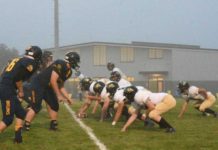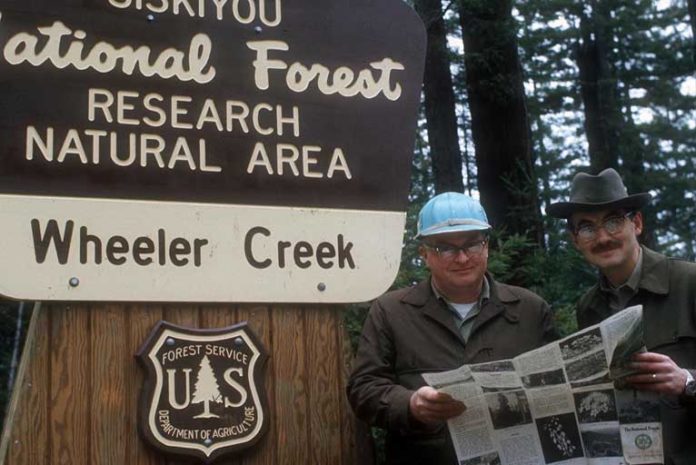Now as the Chetco Bar Fire winds down, and we see 97% of the blaze labeled as contained, we are now able to see what was lost and what was saved.
In the case of the Wheeler Creek Redwoods, it’s a little bit of both, as the old growth stand suffered fire damage during the later stages of the massive Chetco Bar Fire.
Wheeler Creek Research Natural Area, located about 20 miles east of Brookings is home to roughly 25 percent of one of the most northerly redwood groves in the United States. The Wheeler Creek grove is considered the best of the Oregon redwoods, with many trees scaling more than 200 feet.
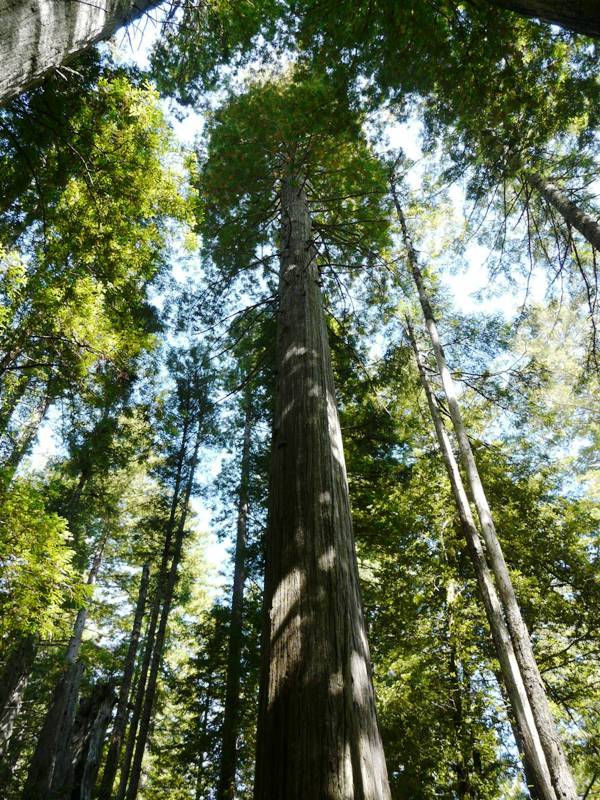
Wheeler Creek is one of around four groves of naturally-occurring redwoods remaining on Oregon soil, located mostly in small patches just north of the California state line and is one of the only protected redwood groves in Oregon. More than 45 percent of the trees in the 600-acre preserve are old-growth redwoods.
On the evening of August 29th, 2017, the Chetco Bar Fire had blackened over 131,000 acres. With renewed Red Flag Wind Warnings forecasting strong, gusty, northeast winds, low relative humidity, very hot, dry and unstable conditions, officials prepared for the possibility of significant perimeter growth. The fire added over 7,000 acres that night as is swept through the Wheeler Creek and Winchuck drainage areas.
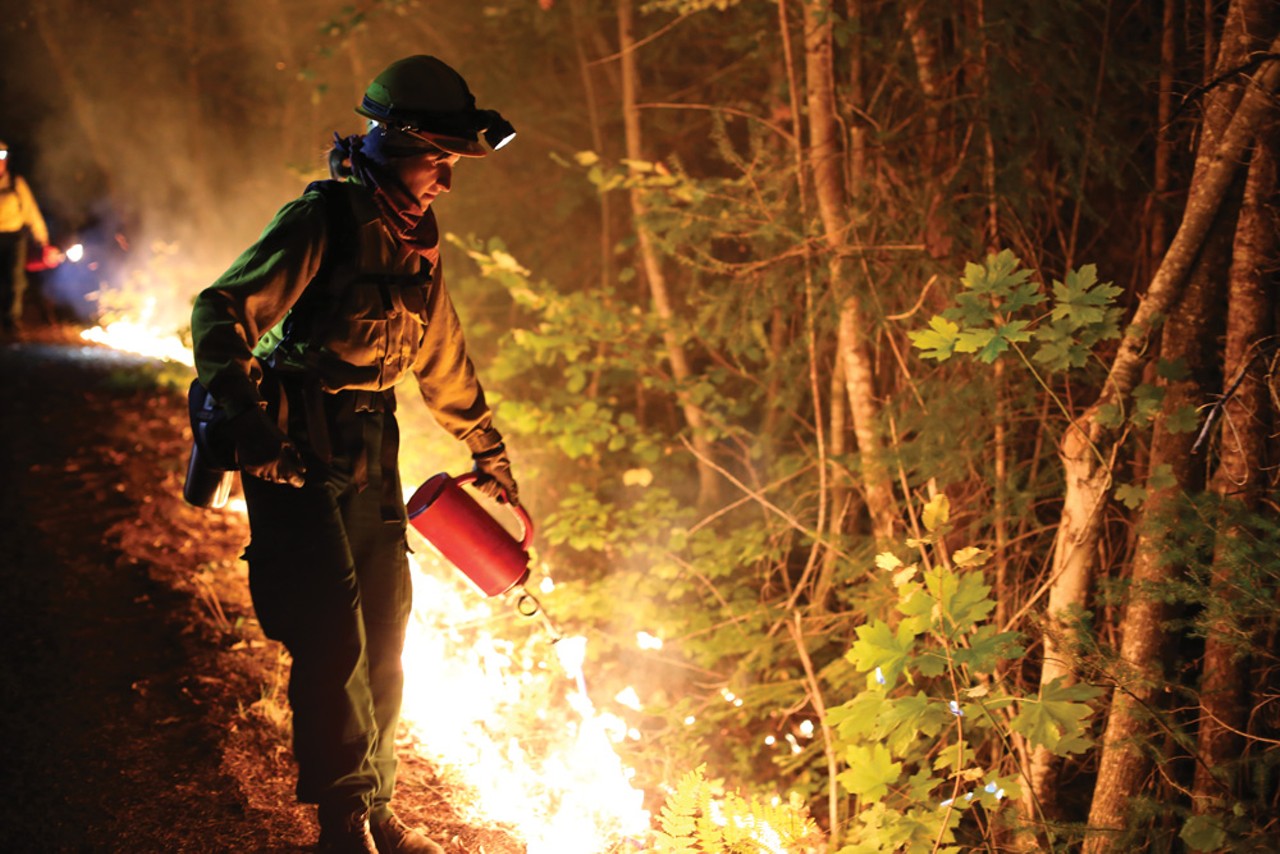
Scrambling to control fire intensity in this area, firefighters started backfires from 1205 Road and north toward Wheeler Creek. By starting backfires along the road, firefighters hoped to reduce the amount of ground fuel available between the road and the main fire burning up from the Wheeler Creek drainage.
Many of the largest redwoods in the grove had already been scarred from previous fires, leaving some with hollow trunks. Old-growth redwoods have exceptionally thick bark making them highly fire resistant, and fires of low to moderate severity are unlikely to damage them.
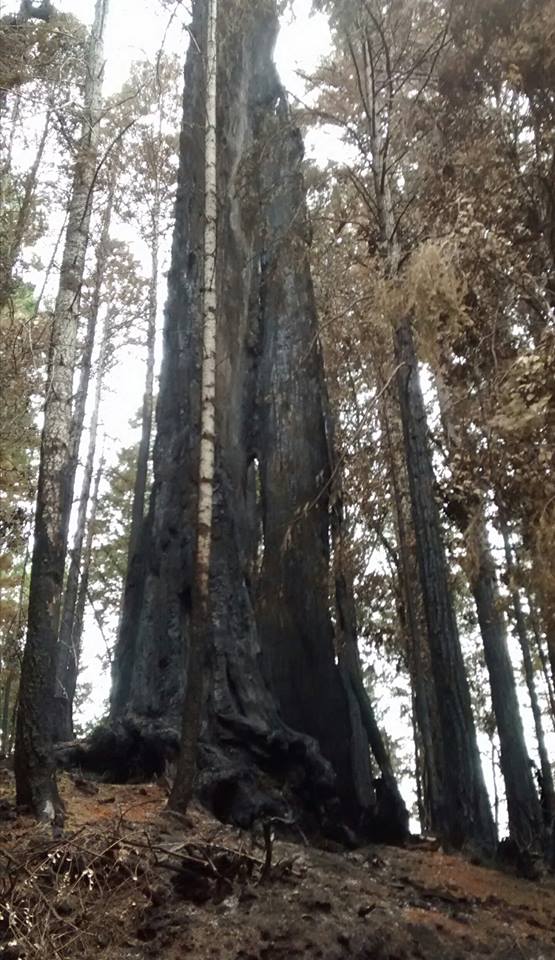
However, even though the ground cover burned only lightly, strong winds and warm weather allowed crowning and some torching across the tops of the giant trees severely burning approximately 20% of the Old Growth grove when the fire moved rapidly up from Wheeler Creek.
The strategy of backfires to slow the fire and reduce the intense heat undoubtedly saved much of the majestic trees in the protected grove and perhaps other historic relics in the area.
One of those historic areas would be the Ludlum House, nestled at the edge of the forest with a vast expanse of lawn stretching out before it located at the confluence of Wheeler Creek and the Winchuck River.
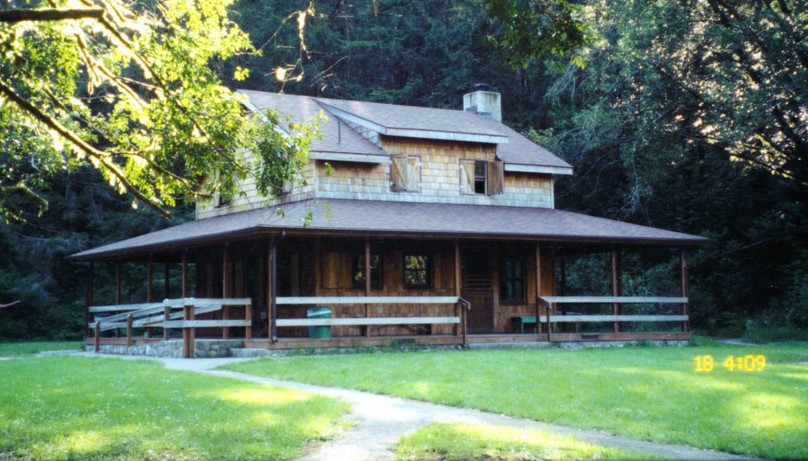
Mr. Ludlum, an oil-company executive, built a two-story vacation house on this site in 1939. He and his family even lived in the house year-round for a time. However, after World War II, the family sold the property to the Forest Service.
Another of these historic sites would be the gravesite of the area’s namesake, Mr. J.P. Wheeler.
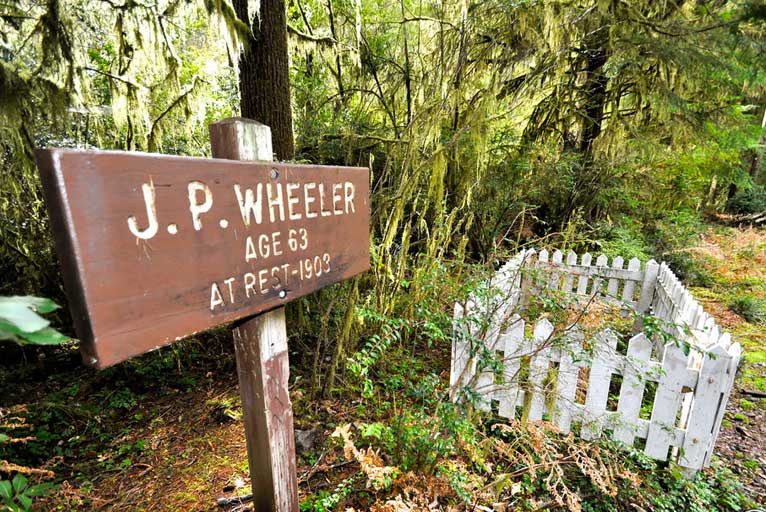
One of the first white settlers in the Winchuck Valley, J.P. Wheeler’s homestead was across Wheeler Creek from the present day Ludlum House, which is now a forest service rental.
In the apple orchard, are the remains of the J. P. Wheeler homestead. His cabin and outbuildings mysteriously burned down shortly after his death in 1903. His gravesite sits alongside the Winchuck River.








